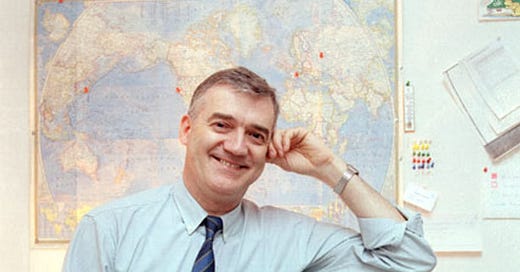Robert Cailliau and the World Wide Web
Robert Cailliau is a Belgian informatics engineer and computer scientist widely recognized for his pivotal role in co-developing the World Wide Web alongside Sir Tim Berners-Lee. Born on January 26, 1947, in Tongeren, Belgium, Cailliau demonstrated an early aptitude for science and mathematics. This innate curiosity led him to pursue higher education in engineering and computer science, eventually guiding him to become one of the foremost contributors to the technology that revolutionized global communication.
Early Life and Education
Cailliau’s passion for engineering and technology was evident from a young age. After completing his secondary education in Belgium, he attended Ghent University, where he studied electrical and mechanical engineering. Eager to deepen his understanding of emerging computing technologies, he went on to the University of Michigan in the United States, obtaining a master’s degree in computer, information, and control engineering.
Career at CERN
In 1974, Cailliau joined the European Organization for Nuclear Research (CERN) in Geneva, Switzerland, at a time when CERN housed some of the world’s most advanced computing facilities. His work initially centered on systems development and user support for the growing community of scientists at the institute. Over time, he became increasingly interested in the concept of hypertext and how it could be used to connect documents and information in a non-linear, easily navigable structure.
Co-Creation of the World Wide Web
The collaborative spirit at CERN enabled Cailliau to meet Tim Berners-Lee, a British computer scientist whose ideas about a global information-sharing platform resonated with Cailliau’s own vision. In 1989, Berners-Lee drafted a proposal for a distributed information system that would link documents using hypertext, an approach that offered unprecedented flexibility and reach. Cailliau immediately recognized its potential and offered significant support in refining these proposals.
In 1990, Cailliau and Berners-Lee co-authored a revised proposal that outlined the framework for the World Wide Web project. Cailliau’s contributions included advocating for the project within CERN, securing funding, and helping design many key elements of the system’s architecture. He also developed one of the earliest Web browsers for the Apple Macintosh, demonstrating the Web’s cross-platform capabilities. Together, Cailliau and Berners-Lee worked tirelessly to ensure that the technology would remain open and universally accessible, a decision that spurred the rapid adoption and global expansion of the Web.
Promotion and Leadership in Web Development
Beyond the initial invention, Cailliau played an active role in raising awareness of the Web throughout the early 1990s. He helped organize the First International World Wide Web Conference in Geneva in 1994, bringing together researchers, developers, and enthusiasts to share insights and chart future directions for the technology. This gathering laid the groundwork for the International World Wide Web Conference Committee (IW3C2), an organization that continues to steer and inspire the annual Web conferences.
Cailliau was also an ardent supporter of public access to the Web and was instrumental in promoting the idea that the technology should remain free of licensing fees. This approach ensured that programmers and organizations worldwide could develop their own Web applications and servers, ultimately fueling the explosive growth of the Internet during the mid to late 1990s.
Later Contributions and Legacy
In subsequent years, Cailliau continued working at CERN on various projects that intersected with Web technology. He advocated for educational use of the Internet, highlighting the potential of the Web to transform classrooms and broaden students’ horizons. His efforts included involvement in projects aimed at introducing the Web into school curricula across Europe.
Cailliau retired from CERN in 2007 but has remained an influential figure in the tech community. He has participated in numerous conferences, lectures, and interviews, reflecting on the origins of the Web, offering critiques of its commercialization, and suggesting ways to preserve its original vision of open information exchange.
Throughout his career, Robert Cailliau’s commitment to open standards, his engineering expertise, and his collaborative spirit were instrumental in shaping the Web. His ongoing advocacy for free access to information, emphasis on educational opportunities, and leadership in early Web conferences highlight his enduring impact on modern computing. Today, Cailliau stands as a testament to the power of cooperation in scientific research, and he continues to inspire future generations of technologists with his pioneering achievements.
References
• Berners-Lee, Tim. Weaving the Web: The Original Design and Ultimate Destiny of the World Wide Web. HarperCollins, 1999.
• CERN. "The Birth of the Web." https://home.cern/science/computing/birth-web
• W3C. "A Short History of the Web." https://www.w3.org/History.html
• University of Michigan. "Notable Alumni in Engineering." https://www.engin.umich.edu/




